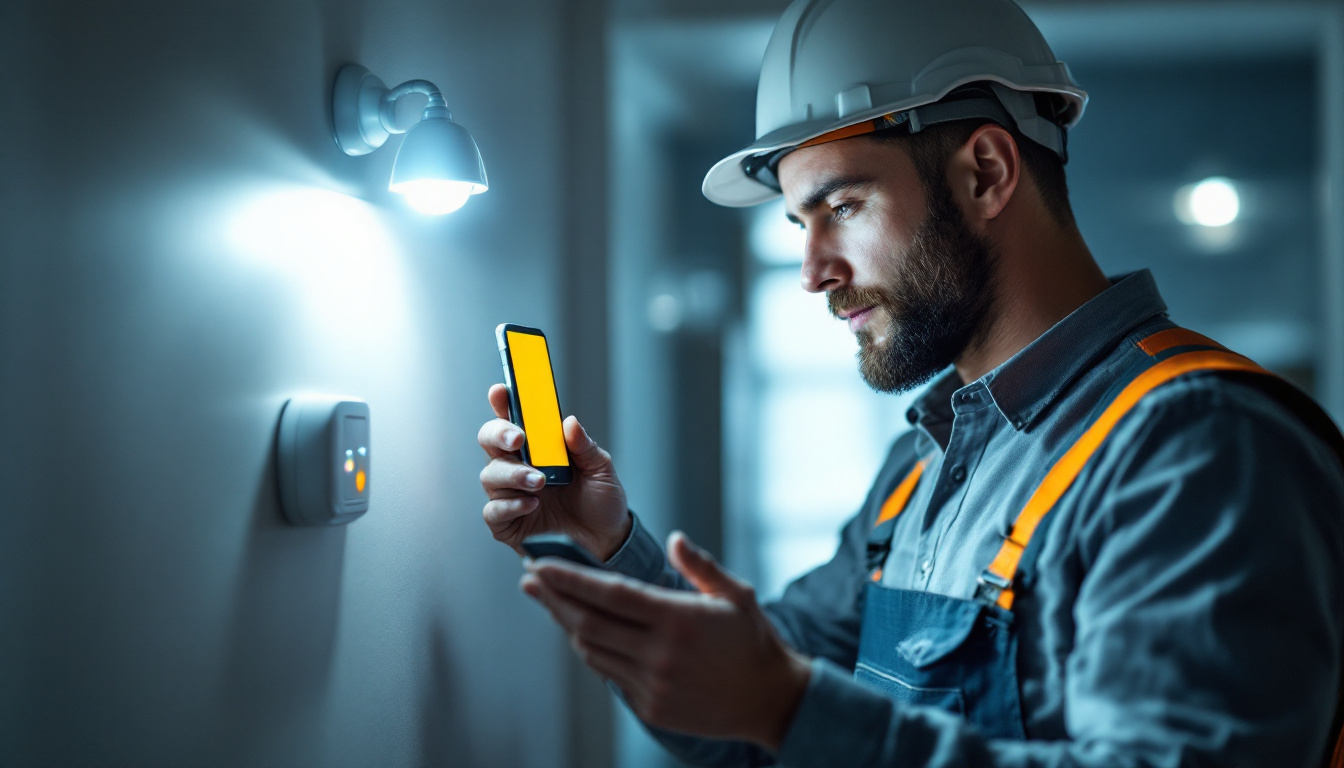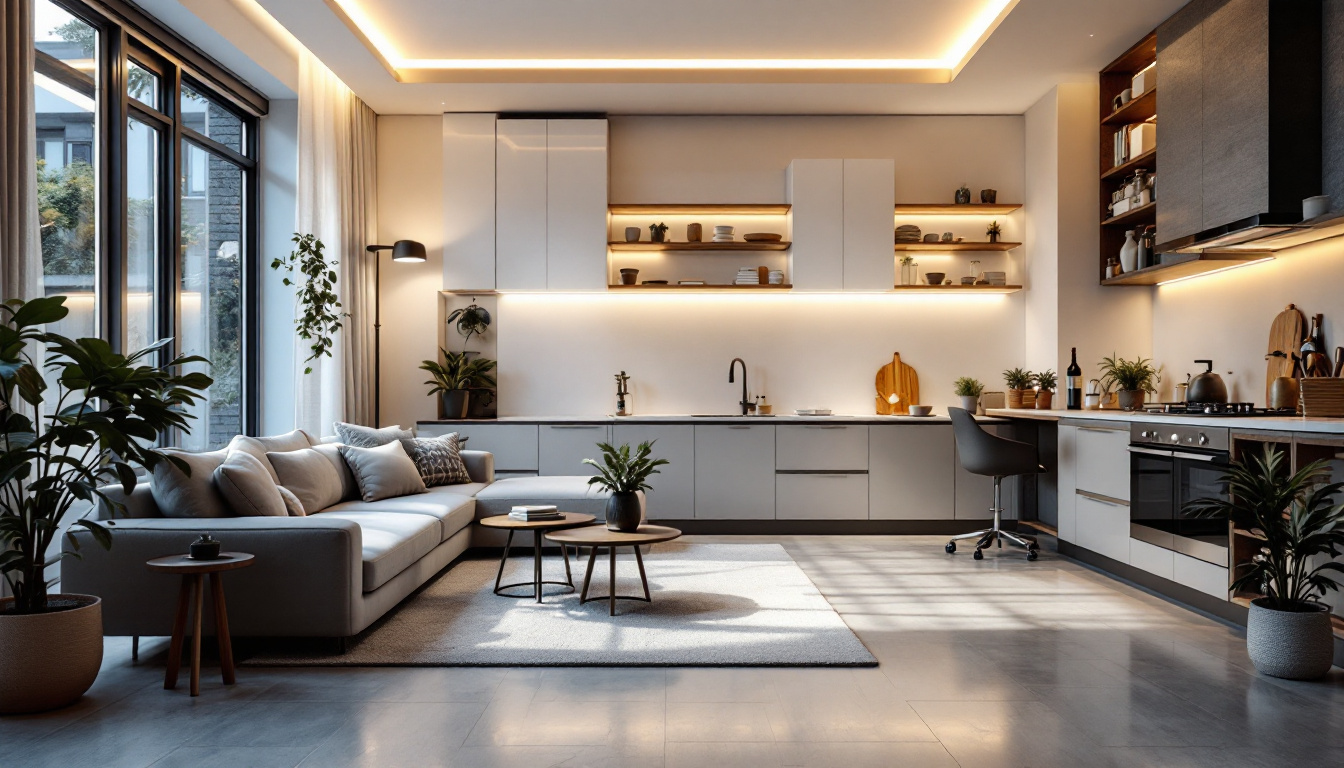
In the ever-evolving world of lighting technology, light on sensors have emerged as a critical component for both residential and commercial applications. These sensors not only enhance energy efficiency but also improve the overall user experience by automating lighting systems. For lighting contractors, understanding the intricacies of light on sensors is essential for delivering optimal solutions to clients. This article will explore the various aspects of light on sensors, including their types, benefits, installation considerations, and maintenance practices.
Light on sensors, often referred to as occupancy sensors or motion sensors, are devices designed to detect the presence of people in a designated area and control lighting accordingly. By automatically turning lights on or off based on occupancy, these sensors contribute to energy savings and enhanced convenience. This technology not only helps in reducing electricity bills but also plays a significant role in prolonging the lifespan of lighting fixtures, as they are not left on unnecessarily when a room is unoccupied.
There are several types of light on sensors available in the market, each with its unique features and applications. Understanding these types is crucial for lighting contractors to recommend the right solution for specific environments. The choice of sensor can greatly influence the overall efficiency of a lighting system, making it essential to assess the specific requirements of each space before installation.
When selecting light on sensors, several key features should be considered to ensure optimal performance:
In addition to these features, many modern light on sensors come equipped with advanced technologies such as wireless connectivity and integration with smart home systems. This allows users to monitor and control their lighting remotely, providing an additional layer of convenience and energy management. Furthermore, as the demand for sustainable solutions grows, manufacturers are increasingly focusing on developing sensors that not only conserve energy but also contribute to a greener environment by reducing carbon footprints.
Moreover, the installation of light on sensors can enhance safety and security in various settings. In commercial spaces, for instance, these sensors can help ensure that pathways are well-lit when occupied, reducing the risk of accidents. In residential applications, they can deter intruders by ensuring that lights automatically illuminate when movement is detected, creating the illusion of occupancy even when homeowners are away. This multifaceted functionality makes light on sensors a valuable addition to both residential and commercial lighting systems.
Incorporating light on sensors into lighting designs offers numerous benefits for both contractors and end-users. Understanding these advantages can help contractors effectively communicate the value of these systems to clients.
One of the most significant advantages of light on sensors is their ability to enhance energy efficiency. By ensuring that lights are only on when needed, these sensors can significantly reduce electricity consumption. This not only lowers utility bills for clients but also contributes to a more sustainable environment.
Light on sensors provide unparalleled convenience for users. With automatic lighting control, individuals no longer need to fumble for switches in dark areas. This is particularly beneficial in spaces such as hallways, staircases, and restrooms, where hands-free operation is essential.
In addition to energy savings and convenience, light on sensors can also enhance safety and security. By ensuring that areas are well-lit when occupied, these sensors can help prevent accidents and deter potential intruders. This is especially important in commercial settings where safety regulations must be adhered to.
Proper installation of light on sensors is crucial for achieving optimal performance. Lighting contractors must take several factors into account to ensure that the sensors function effectively in their intended environments.
The placement of light on sensors plays a vital role in their effectiveness. Contractors should consider the following when determining sensor placement:
Light on sensors require a reliable power supply for optimal operation. Contractors must ensure that the wiring is correctly installed and meets local electrical codes. Additionally, understanding the sensor’s power requirements is crucial for preventing malfunctions.
After installation, thorough testing and calibration of the sensors are essential. This includes adjusting sensitivity settings, time delays, and ensuring that the sensors respond accurately to motion. Contractors should also educate clients on how to operate and troubleshoot the sensors as needed.
To ensure the longevity and effectiveness of light on sensors, regular maintenance is necessary. Contractors should inform clients about the importance of ongoing care and provide guidance on best practices.
Dust and debris can accumulate on sensor lenses, impairing their ability to detect motion accurately. Regular cleaning of the sensor lenses is essential for maintaining optimal performance. Contractors should recommend a cleaning schedule to clients, emphasizing the importance of using non-abrasive materials.
Some advanced light on sensors come with software that may require periodic updates. Contractors should stay informed about any updates from manufacturers and advise clients on how to implement them, ensuring that the sensors continue to operate efficiently.
Conducting periodic tests of the light on sensors can help identify any issues before they become significant problems. Contractors should encourage clients to test the sensors regularly, checking for responsiveness and adjusting settings as necessary.
While light on sensors offer numerous benefits, they are not without challenges. Understanding these potential issues and their solutions can help contractors provide better service to their clients.
One common challenge with light on sensors is false triggering, which can occur due to pets, moving objects, or environmental factors. To mitigate this issue, contractors can recommend sensors with adjustable sensitivity settings, allowing clients to customize the detection range based on their specific environment.
In some cases, the detection range of a sensor may not cover the entire area. This can be addressed by strategically placing multiple sensors in larger spaces or selecting sensors with a wider field of view. Contractors should assess the layout of the area and recommend solutions accordingly.
Integrating light on sensors with other smart home or building automation systems can sometimes be challenging. Contractors should stay informed about compatibility issues and recommend solutions that allow for seamless integration, enhancing the overall functionality of the lighting system.
The landscape of lighting technology is continuously evolving, and light on sensors are no exception. Staying ahead of trends can help lighting contractors offer cutting-edge solutions to their clients.
As smart home technology becomes increasingly prevalent, light on sensors are being integrated with other smart devices. This allows for enhanced control and automation, enabling users to manage their lighting systems through mobile apps or voice commands. Contractors should familiarize themselves with these technologies to provide comprehensive solutions.
Energy management systems are becoming more sophisticated, and light on sensors are playing a crucial role in these developments. By integrating sensors with energy management systems, contractors can help clients monitor and optimize their energy usage, leading to further savings and sustainability.
With the rise of data analytics, light on sensors are now capable of providing valuable insights into occupancy patterns and energy usage. Contractors can leverage this data to offer tailored solutions to clients, helping them make informed decisions about their lighting systems.
Light on sensors are a vital component of modern lighting systems, offering numerous benefits in terms of energy efficiency, convenience, and safety. For lighting contractors, understanding the various types, installation considerations, and maintenance practices associated with these sensors is essential for delivering optimal solutions to clients. As technology continues to advance, staying informed about trends and challenges will ensure that contractors remain competitive in the ever-evolving lighting industry.
By embracing the potential of light on sensors, lighting contractors can not only enhance their service offerings but also contribute to a more sustainable and efficient future in lighting design.
Ready to take your lighting projects to the next level? At LumenWholesale, we provide lighting contractors with the highest quality, spec-grade light on sensors and other lighting products at unbeatable wholesale prices. Say goodbye to inflated markups and hello to superior lighting solutions that meet the highest industry standards. With our hassle-free bulk buying and free shipping, you can equip your projects with premium lighting at the best value — all without hidden fees or compromises. Elevate your lighting designs with the perfect blend of quality, affordability, and convenience. Explore our Wholesale Lighting at the Best Value today and light up your client’s world with confidence.

Discover the latest in energy-efficient lighting with 12-volt screw-in LED bulbs.

Discover the hidden aspects of 4 strip light installations that even seasoned lighting contractors might miss.

Discover the ideal color temperature for talking head videos with our comprehensive guide tailored for lighting contractors.

Discover the essential role lamp holders play in modern lighting projects and why they are a must-have for every lighting contractor.